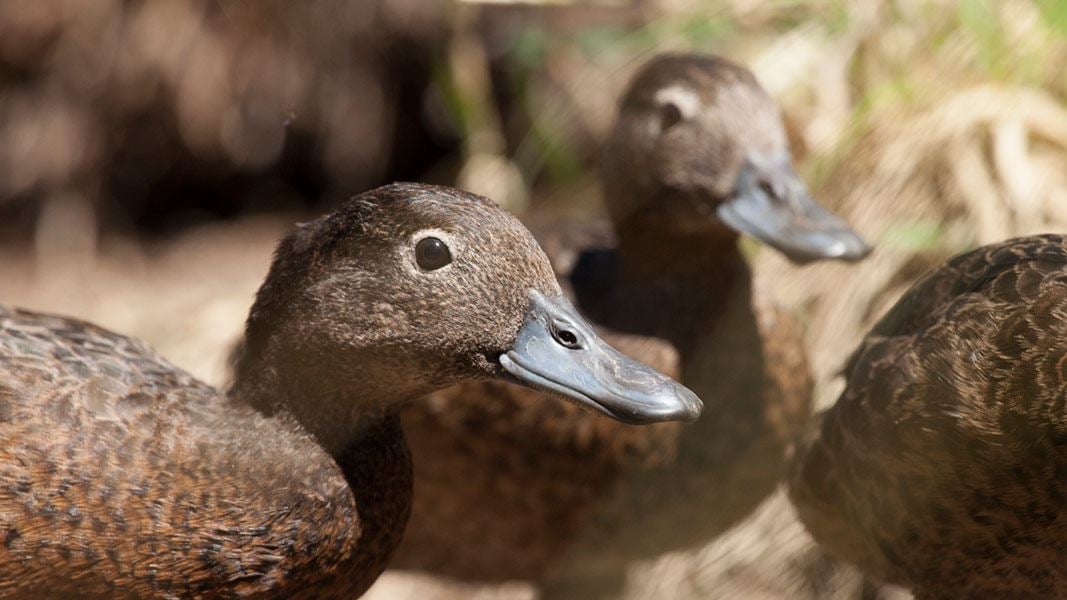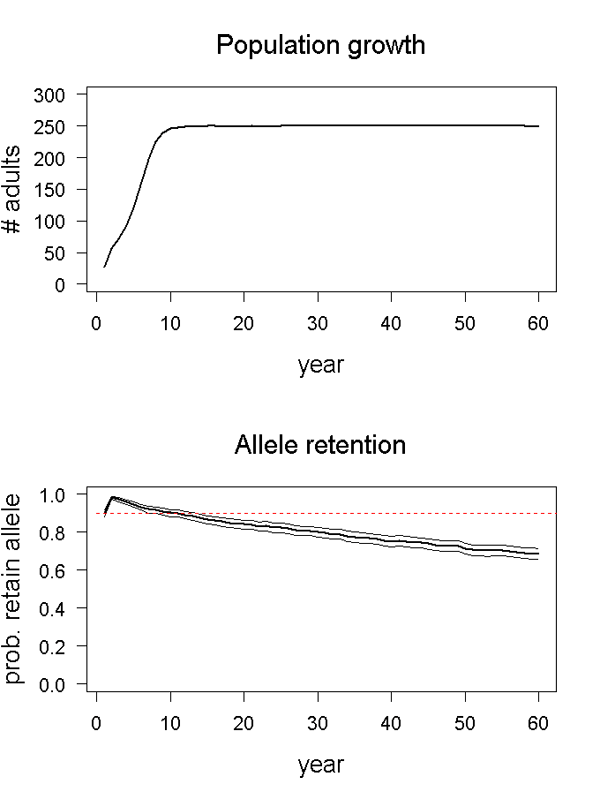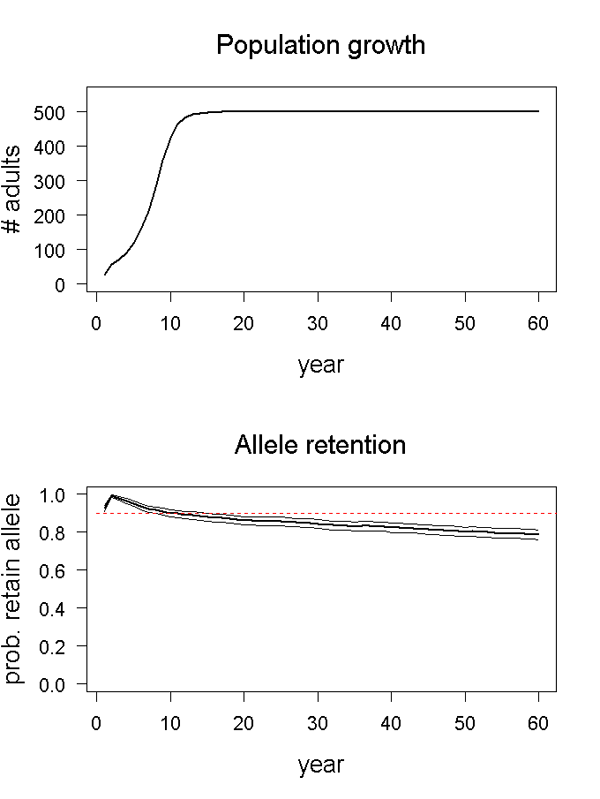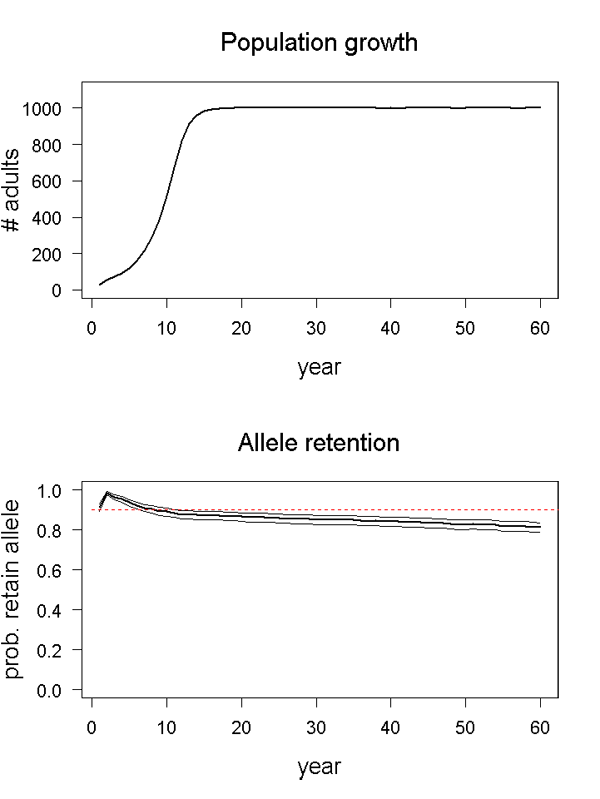First determine your habitat connectivity, habitat size and predator control levels of the translocation site; then view the predicted success of translocations for different scenarios.
Points to note if you are translocating this species
Pāteke translocations typically use captive-reared birds and often require post-release supplementary feeding. In addition, translocated pāteke require post-release monitoring and typically carry radio transmitters to provide initial dispersal and survival data.
All pāteke translocations should be planned and carried out in consultation with the Pateke Recovery Group.
Pāteke have historically occupied wet forests, wetlands, slow-moving streams, lakes and estuaries. The current distribution of this species is mostly limited to combinations of pastoral land, forest remnants, wetlands and estuaries, which are utilised for nocturnal feeding, breeding and flocking. Therefore, all of these habitat types should be available within a protected area.
Factors of success for pāteke
Founder number for maximising genetic diversity
The average founder number is 225 captive-reared birds over 3–5 translocations
Habitat connectivity
Low (isolated), Medium and High (adjoining)
Pāteke are capable of dispersing over reasonably large distances, including well beyond release/protected sites. Therefore, ideally you should translocate this species into areas where all of the surrounding habitat (c. 2–3 km) receives some level of protection.
Habitat size
The Pateke Recovery Group currently recommends that translocation sites are at least several hundred hectares in size because the carrying capacity can vary widely between areas.
Small (minimum area)
300 ha
Medium/Large
Unknown
Minimum predator control
If you are translocating pāteke, you will need to maintain predators at a very low density at the release site at a minimum. However, overall survival and productivity will probably be higher at sites where predators are eradicated or maintained at zero density.
Predators maintained at low density
Pāteke are highly susceptible to mammalian predators, particularly mustelids, cats and dogs. Therefore, you must control these predators using best practice techniques with the aim of reducing all predators to zero or very low densities within the release area. Other predators include pūkeko and swamp harriers, which can affect the establishment phase, so additional control of these species may be required at least during this period. Mallard ducks can compete with pāteke and so should be discouraged or removed from release sites. It is also important to note that vehicles can be a significant source of pāteke mortality at sites that are adjacent to or bisected by roads, and nets set for mullet or eels in creeks, rivers, ponds and estuaries can also cause pāteke deaths.
Predators eradicated
This requires the total eradication of all target predators with the exception (in most cases) of mice, or the maintenance of zero density year-round.
Predicted success for scenarios
Pāteke: Scenario 1
Scenario: Low habitat connectivity, small habitat size, predators maintained at low density.
Data source: Survival data and the number of fledglings per female were obtained from Northland populations; initial survival was estimated by experts; and total founder and release group sizes were estimated from Port Charles, Tawharanui and Arthur Valley populations.
Conditions: 55 birds were translocated and released each year for 4 years; the carrying capacity of the site was 250 pāteke; there was no migration.
Outcome: A viable population will likely establish. The initial increase in allele retention is due to the supplementary translocation of 55 birds each year for 4 years, but there will still be some loss of genetic diversity over ten generations, which could affect the long-term persistence of the population. You could improve this result by choosing a larger site (see Scenario 3).
Pāteke: Scenario 2
Scenario: Low habitat connectivity, medium habitat size, predators maintained at low density.
Data source: Survival data and the number of fledglings per female were obtained from Northland populations; initial survival was estimated by experts; and total founder and release group sizes were estimated from Port Charles, Tawharanui and Arthur Valley populations.
Conditions: 55 birds were translocated and released each year for 4 years; the carrying capacity of the site was 500 pāteke; there was no migration.
Outcome: A viable population will likely establish. The initial increase in allele retention is due to the supplementary translocations of 55 birds for the first 4 years but there will still be some loss of genetic diversity over ten generations, which could affect the long-term persistence of the population. You could improve this result by choosing a larger site (see Scenario 3).
Pāteke: Scenario 3
Scenario: Low habitat connectivity, large habitat size, predators maintained at low density.
Data source: Survival data and the number of fledglings per female were obtained from Northland populations; initial survival was estimated by experts; and total founder and release group sizes were estimated from Port Charles, Tawharanui and Arthur Valley populations.
Conditions: 55 birds were translocated and released each year for 4 years; the carrying capacity of the site was 1000 pāteke; there was no migration.
Outcome: A viable population will likely establish with the maintenance of 80% of genetic diversity over ten generations. The initial increase in allele retention is due to the supplementary translocations of 55 birds for the first 4 years.



